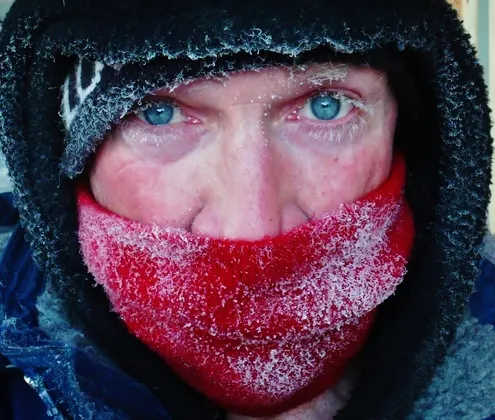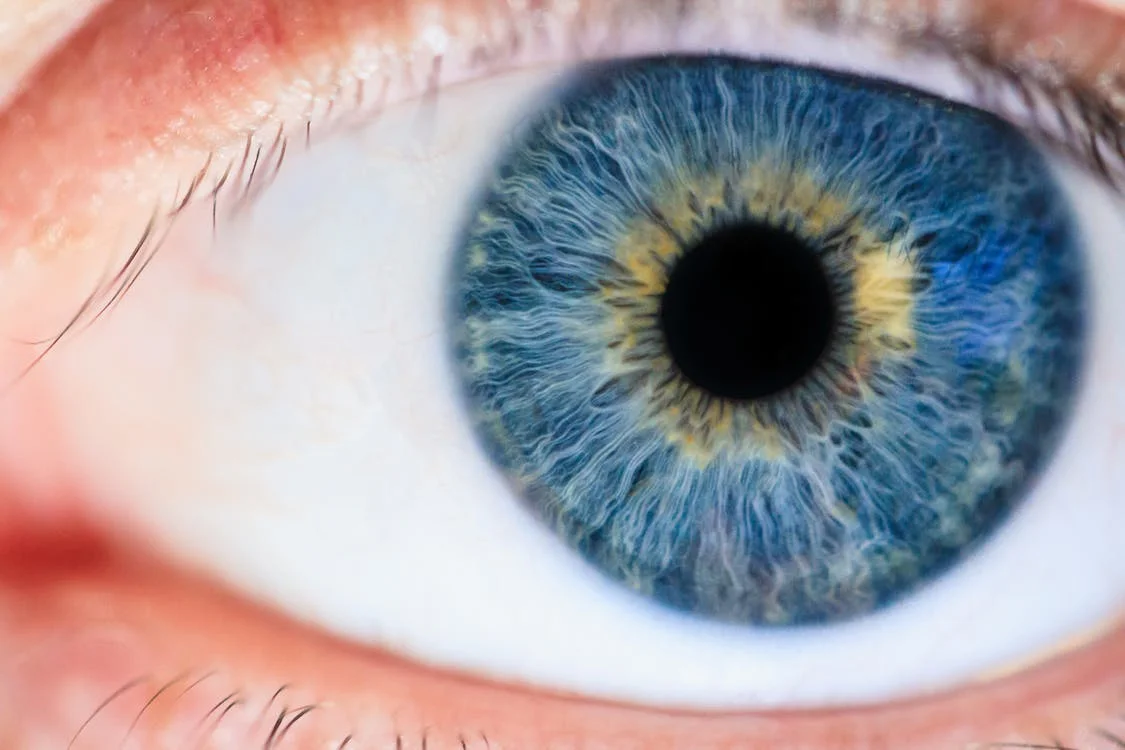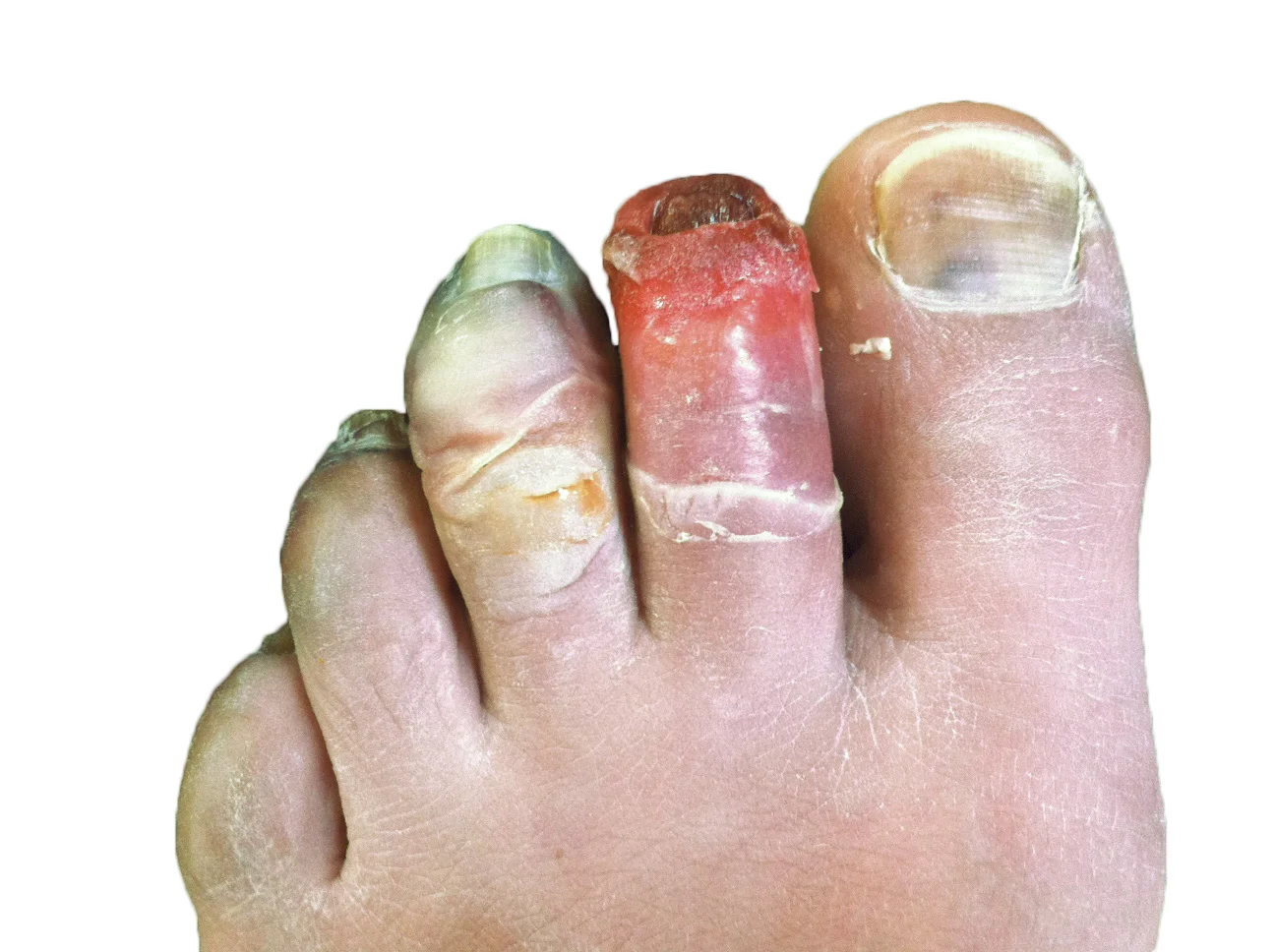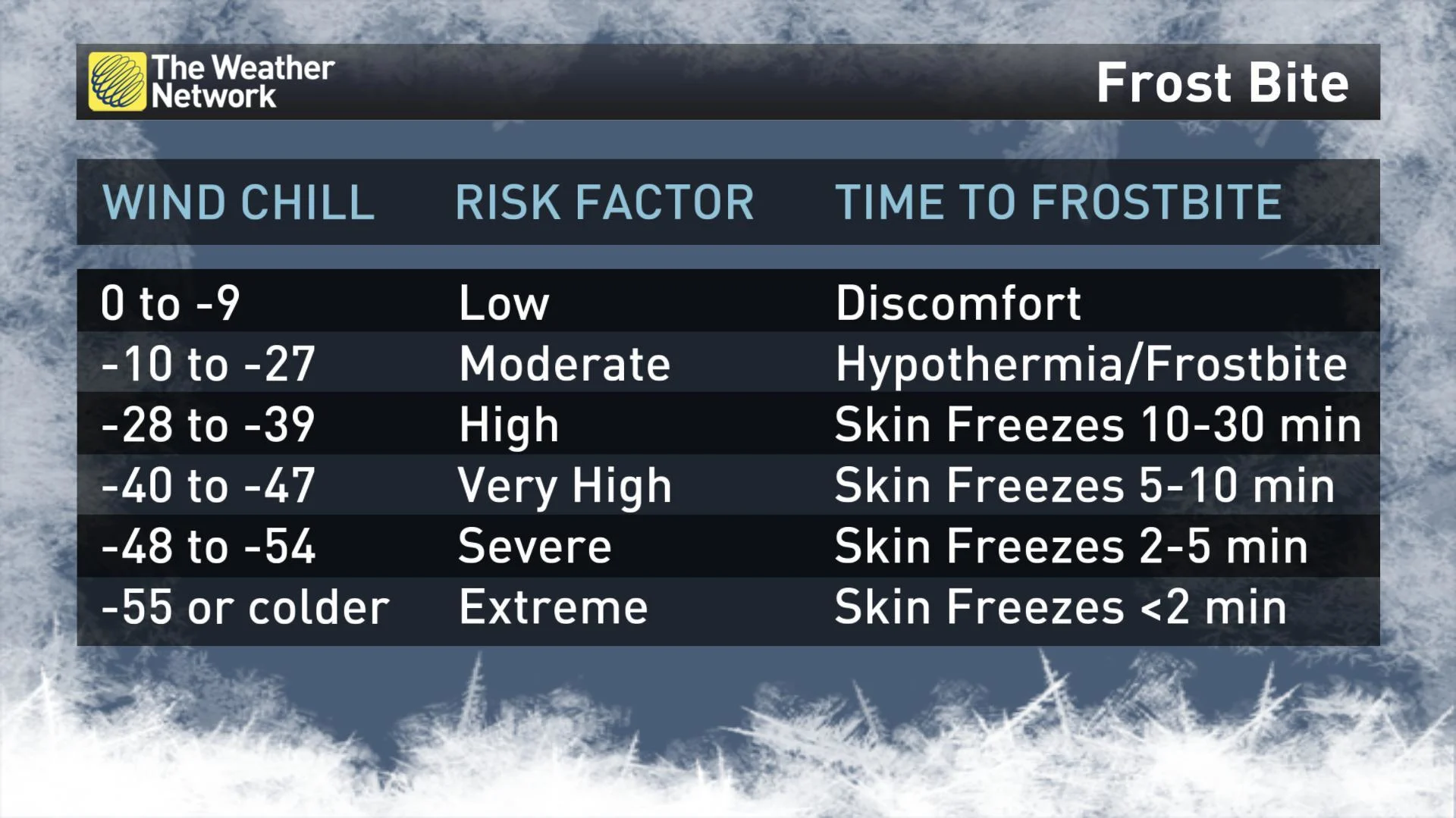
Five terrible things extreme cold does to the human body
Canada is a cold country, and the colder it gets, the more life-threatening it becomes. Here's what to expect when the temperature drops too low.
Though Canadian summers can be toasty, Canada is famously a winter nation, with some provinces routinely grappling with extreme cold and wind chill values making it feel like -40 or colder.
The human body is NOT designed to handle conditions like that, and when we talk about dangerous cold, we mean it.
Here are five terrible things extreme cold does to a human being.
YOUR CORNEAS MAY FREEZE
If you spend a lot of time outside in that hellish cold combined with warmth-sapping winds, surely you must wonder: Could your eyeballs actually freeze?
In short exposures, no. This piece in the New York Daily News on outdoor running in cold weather notes your eyes will tear up, reducing the freezing point, and regular blinking will keep your peepers in working order.

It’s a whole other story if you’re a skier or snowmobiler, or anyone who has to spend a lot of time outdoors with the wind blowing in their face, and you forget to pack goggles.
Princeton University says forcing your eyes open in strong winds and extreme cold with no protection from extreme cold can, in fact, cause your cornea to freeze.
This actually causes people to drop out of grueling cross-country Arctic races like Alaska’s Iditarod, and even when re-warming the area (which this article says can be done with a compress or warm hand), you still have to deal with momentary blurred vision. It’s even possible for contact lenses to freeze to the eyeballs.
The eyes are usually thawed by the time the victim gets to a physician, and any damage can usually heal in days or weeks, but severe cases could result in tissue loss requiring restorative surgery.
Remember your goggles, outdoor enthusiasts.
YOUR SKIN (AND MUSCLES, AND TISSUE) FREEZES SOLID (WARNING: GRAPHIC CONTENT)
At least your eyes can’t freeze solid.
But your extremities – feet, fingers, toes – absolutely can freeze that thoroughly, to the point of actually falling off your body, or else needing to be amputated.

Image: Wikimedia Commons/Dr. S. Falz
Welcome to the wonderful world of frostbite. Unlike its cousin, frostnip, which only freezes the skin and feels like its burning or tingling, frostbite can freeze not just the skin, but muscles, tissues and fat beneath it.
You’re especially at risk of this if you’re not wearing proper gear, and the wind chill is particularly stiff.
When wind chill values reach lower than -40, which they are all but guaranteed to do at least once a season for parts of the country, your skin can freeze within minutes.

And the longer you’re exposed, the more likely it is that the damage becomes widespread, to the point of possibly requiring amputation, even if you do manage to find medical attention.
It’s not just humans, either. Despite their furry coats, your pets’ extremities are also at risk, like this stray cat who had to have its ears removed after being rescued.
And that’s just the extremities. When the extreme cold reaches your core, that’s when the risk of death starts setting in.
YOUR BODY STARTS SHUTTING DOWN
When authorities issue extreme cold warnings or alerts, they’re meant to be taken seriously. If you’re not dressed properly or you’ve no shelter, extreme cold can kill.
In Canada, more than 80 people die from extreme cold per year, according to Environment Canada, and public officials have that stat in mind when they issue extreme cold alerts. For one thing, it frees up additional shelters for the homeless and other vulnerable groups.
The human body is geared to maintain a core temperature of 37°C exactly. Any deviation from that causes serious problems, and when the body temperature begins to drop, that’s when hypothermia sets in.
Even a drop to just the 32-35°C range triggers the process, marked by constant shivering, tiredness, fast breathing and other symptoms.
Below the 32°C mark, characterized as moderate hypothermia, sufferers might actually begin to act like they are intoxicated, with poor coordination, slurred speech, visible confusion and declining judgement. Their breathing starts to slow also, a process called hypoventilation.
They may also stop shivering. That is a bad, bad sign, and in their mental state, they may not even realize their body temperature is at life-threatening levels.
And when the body temperature falls below the severe level of 28°C, at least nine degrees below optimal, that’s when the greatest risk of death comes.
In fact, onlookers may think the victim is dead already. At about that point, they’ll lose consciousness, their breathing will become too shallow to detect, if it doesn’t stop altogether, their pulse will be weak, irregular or absent, and their pupils will be dilated.
Britain’s NHS says people in that severe hypothermic state may be resuscitated if rushed to medical care in time, but severe hypothermia is often fatal.
But before it reaches that point, remember where we said moderate hypothermia symptoms include confusion and loss of reason? That can take some bizarre (and sinister) forms.
YOU'RE SO CONFUSED YOU START UNDRESSING
It’s not common, but it happens: People who have been found after dying of hypothermia seem to have doffed their clothes in their final throes. There’s even a word for it: ‘Paradoxical undressing.’
German scientists at Freie Universitat Berlin looked at 69 hypothermia deaths from 1978 to 1994. They found about 25 per cent of the victims had taken their clothes off before death.
Remember when we said, up above, that hypothermia impairs judgement? What happens at later stages is that the blood-rate slows and blood vessels are dilated, making the victims, in their addled state, feel like they were burning up, when in fact they were losing heat faster than ever. So off came the clothes, and their fate was sealed.
LiveScience notes the phenomenon has often led to police mistaking hypothermia victims as having suffered some kind of assault.
If that wasn’t weird enough, the scientists from that study noted most victims who’d done this also displayed what they called “terminal burrowing behaviour.” Basically, with the last of their strength, they’d try their hardest to protect their bodies as much as possible burrowing into the snow, hiding under beds or cramming themselves into closets.
“This is obviously an autonomous process of the brain stem, which is triggered in the final state of hypothermia and produces a primitive and burrowing-like behaviour of protection, as seen in (hibernating) animals,” the scientists wrote in 1995.
By the time these weird patterns start happening, it’s probably too late for the victims of hypothermia. But if they do die from their condition, and no one finds them, the extreme cold isn’t done with them.
YOUR FROZEN BODY GETS MUMMIFIED
If it’s cold enough, and dry enough, and you die where no one can find you, your body will essentially become a frozen mummy.
And you can stay that way for a VERY long time. Take the man whose remains were discovered in the video below (warning: Graphic content):
That’s George Mallory, the Everest explorer who went missing in 1924, lost until a team found his body in 1999, with much of his exposed clothing ragged and torn but the flesh beneath remarkably intact and frozen solid. Encyclopedia Britannica says he likely died after a bad fall, and his body was buried where it was found, 8,400 m above sea level.
And in those conditions, a body can last even longer. In 2004, hikers on the border with Italy and Austria found the preserved bodies of three Austro-Hungarian soldiers, frozen in a glacier.
They’d been there since 1918, and bodies can be preserved even longer than that, like “Otzi the ice-man”, a Stone Age relic who was found in a glacier in Italy in 1991.
WATCH BELOW: WHAT A 5,300-YEAR-OLD 'ICEMAN' HAD AS A LAST MEAL
He’d been there for 5,300 years, covered first by snow, then by ice, emerging from time to time as the climate changed until two hikers happened upon the body.
As you can see from the video above, Otzi’s not exactly pretty, but without the cold conditions, there’d have been nothing but bones.
WATCH: WIPER BLADES UP BEFORE A WINTER STORM - GOOD OR BAD IDEA?
Thumbnail image source: Getty Images
